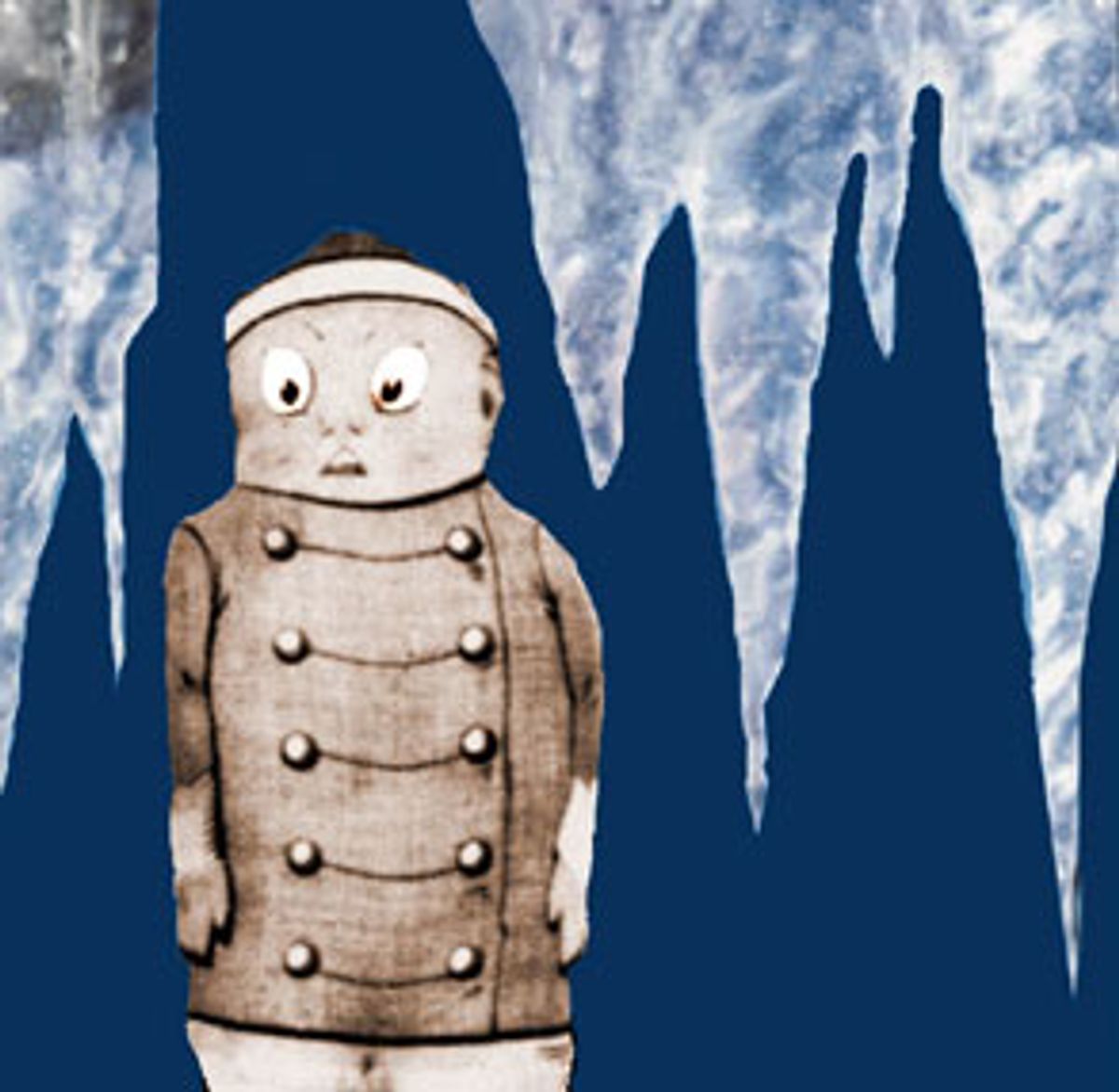My freezer is full of cats.
Before you call the Society for the Prevention of Cruelty to Animals, let me assure you, these cats are not alive.
They're not dead, either. These are stuffed animals, toys, drenched in water and left on their backs in the cold. Small icicles hang from their tails. The wire shelf racks score ribs into their synthetic fur. Soon my kids will take them out and squeeze them to see how crunchy they've become. They'll marvel at the temperature. They might suck on a frozen paw.
Now 9 and 6, my kids have been freezing their toys for as long as I can remember. At any given moment, I can find a Tupperware container in the freezer, the water inside thickening into ice floes around a bunch of Legos or a Barbie head. Often, I'll walk into the kitchen and see the kids madly stabbing at blocks of ice with butter knives, frozen shards flying like sparks as they excavate their playthings.
Toys are not the only things my kids freeze. Currently, the freezer sports an atomic fireball candy encased in a cup of ice. The kids will thaw the confection and drink the water, which they say tastes like cinnamon tea. They have frozen volcanoes made of vinegar and baking soda, socks, pencils, strange mixtures of juice and pretzels -- pretty much anything that can be stuffed through the narrow door of our side-by-side Coldspot.
They like to see how things change. "Freezing stuff is cool," my son said the other day as he pulled out of the freezer a cup filled with plastic spiders suspended in some sort of frozen pink solution. Then he laughed and corrected himself. "No," he said. "It's cold."
In one of his "Sonnets to Orpheus," German poet Rainer Maria Rilke reminds us to "be conversant with transformation." My kids, it seems, have a nonstop gabfest with transformation. I won't let them play with fire, so they play with ice, an element that they can touch, and can alter. They are tapping into a basic magic here: How amazing, really, that water can shape-shift itself into solid, liquid, gas. How amazing that our bodies are made almost entirely of water. My kids, in their ice play, know that transformation is our native language.
I remember being blown away by the first law of thermodynamics when I first learned about it in a high school physics class. My world was rocked by the notion that matter cannot be created or destroyed, only transformed. It made me wonder what my own personal matter had once been. Maybe my little toe was once the tooth of a tiger. Maybe my eyeball was once Einstein's breath. Maybe a little bit of praying mantis was braided into my hair. It made me wonder what my body would one day become. Would my kneecaps turn into tulips? My aorta, stardust? The world suddenly seemed much more dynamic and interconnected than I had ever before imagined. Nothing was solid anymore. Everything was in rich, pregnant flux.
Being a mom keeps me conversant with transformation. I remember how, when pregnant, each day I would wake up with a new body -- my nipples, my bellybutton, the stretch marks that girded my hips all charting previously unexplored territory.
Now I watch my kids' bodies transform almost daily. It is incredible to me how they came out of nothingness, how they grew into somethingness under my skin, how they keep on growing and changing, changing and growing. My son, who started to measure his height against mine when his head was up to my thigh, now hits my shoulder. I spoke with him the other day about puberty (which he thought was called "peeverty," an apt malapropism if ever there was one) and he seemed both terrified and thrilled by the prospect of so much impending change.
I watch my own transformation as I get older -- the fine lines across my face, the softening of my various parts. Our bodies are verbs, not nouns. We don't stay the same for very long. We dissipate, we gather. We freeze, we melt, we boil.
My kids seem to know this as they set about turning our kitchen into a cryogenics lab. They seem to understand that life is fluid, dynamic, constantly changing. Or maybe I'm just projecting -- maybe they're fueled by curiosity, pure and simple, as they explore their world, explore their own power, discover what changes they can effect with their own hands. Whatever their thoughts on the subject may be, I don't mind finding frozen cats or candies or clothing in the freezer. It keeps me conversant with transformation. It keeps me conversant with my growing family, our strange and mutable selves.



Shares